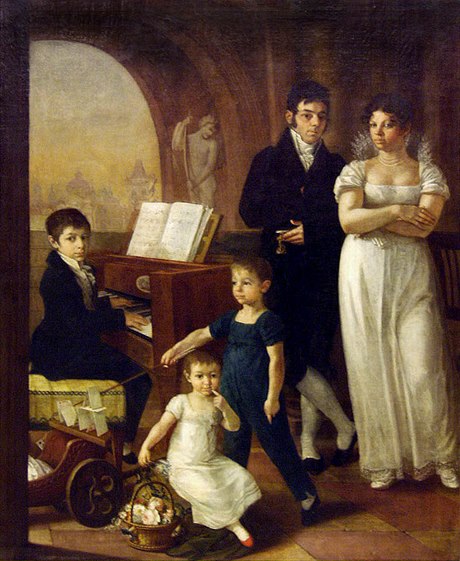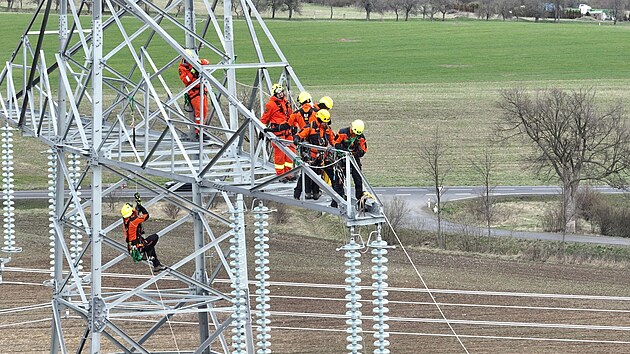The Czech name for Prague, “Praha,” is grammatically feminine – but the city’s history is usually depicted from a male point of view. Emphasis is placed on warfare, rulers, inventions and significant events. Prague and Her Daughters, a new exhibit at the City of Prague Museum, seeks to change that by tracing the city's history from prehistoric up to modern times through the perspective of women.
“This year the 130th anniversary of the museum, and this exhibit is to help celebrate that event,” museum director Zuzana Strnadová told Czech Position. “At this time, half of the people who work at the museum are women, and that is why we prepared the exhibition,” she said, adding that the name museum is related to the temple for a muse, one of the mythical goddesses who inspire art.
The idea was put forward by Pavla Státníková and Miroslava Šmolíková, two members of the museum staff. Státníková is also the author of several books on Prague history. “When my colleagues suggested the idea I approved of it,” Strnadová said.
A support program with lectures and seminar that will accompany the exhibit is a crucial component of the exhibition, according to Státníková. The lectures will be directed at both women and men in an effort to broaden communication. The website www.dceryprahy.czhas been set up as well in cooperation with the Municipal Library to present digital copies of works by Czech female authors.
Stone tools and mythic visions
While Prague has many specific famous women, starting perhaps with St. Ludmilla who lived at the turn of the ninth century, Státníková said that the exhibition was designed to look beyond just famous personalities and and show the lives of women who were both known and unknown.
The exhibition relies heavily on graphic images — some of which are copies — to trace both mythical concepts and the often contrasting realities. Oval, almost egg-shaped areas break the exhibition space into chronological and thematic sections.
The first theme, Prague is Feminine, shows allegorical images that Art Nouveau artist Alfons Mucha made for the Municipal House (Obecní dům) along with scale models that artists submitted in a competition for the semicircular mosaic above the building's main entrance. A model for Ladislav Šaloun’s statue “Allegory of Prague” is another typical depiction of Prague as a feminine entity, draped in classical robes.
The adjacent Symbols of the Female World section has a copy of a mural of Eve by Karel Svolinský from St. Vitus' Cathedral as well as picture of a wall with some graffiti, including a popular diamond-shaped vulgar image that goes without further explanation.
The linear depiction of history starts with stone grinding tools for grain and other items probably used chiefly by women found in the area that later would become Prague.
The crude and mundane tools contrast sharply with the idealized images of silk-draped women from Czech myths and legends.
The centerpiece of the section on legends is an enlarged copy of a sketch by Mikoláš Aleš of Libuše prophesying that the still unfounded Prague will be a great city. The mythical princess pops up again in from of a manque for statue at the Palacký Bridge (Palackého most), designed by Josef Mauder. Another model for a sculpture, this time of of the mythical female warriors Vlasta and Šarka, was designed by Josef Čapek, who is better known as a writer and Cubist painter. Most of the paintings and other images on display are by male artists.
Fragments of domestic tiles from various eras show that while women worked at home, idealized images of housework as well as of Biblical and legendary women decorated the kitchen and other domestic spaces. A set of rough and rather plain crockery from the 13th century found during excavations at Ungelt shows that housework was — then as now — less glamorous than the colorful kitchen tiles suggest.
Printing their own future
Státníková pointed out that one area where a few women were able to break out beyond the stereotypical domestic role was in book printing, at first during the 16th century by helping out their male family members who owned printing businesses and eventually inheriting them. By the 17th century some women were ran successful print shops without male help. Ludmila Sedlčanská is perhaps the most famous of the printers from this era.
At the same time, though, women in general were facing a setback. Before the the Battle of White Mountain in 1621 — where Czech gentry lost to Catholic forces and fell under Hapsburg rule — a wealthy woman might have had a library of 10 to 20 books on various religious, medical and legal topics. After the battle, the typical library shelf for woman would be typically three slender tomes, all of a religious nature. Eventually, though, ideas on equality from 18th century writers like Jean-Jacques Rousseau and Mary Wollstonecraft made their way into Czech society, and the concept of emancipation slowly took root.
But change to preconceived roles came slowly. Paintings from the subsequent Biedermeier era show idealized family portraits for the wealthy — with women in somewhat elaborate fashions — while the middle- and lower-class women can be spotted in street scenes washing clothes or selling produce. A few fancy dresses and other fashion items of the era are also on display,
By the end of the1800s, education was becoming a more important and more accessible for women, Státníková said. A 1902 report card from a women’s business academy and printed material from Minerva, a middle school for women started by writer Karolina Světlá, hint at the growing opportunities for Czech women.
An array of implements show some of the options that were available to women by the early 20th century: a rather forbidding looking patented wooden washing machine is joined by a sewing machine, a typewriter and a microscope. The first two show the continuation of stereotypical roles while the last two items symbolize the new opportunities women had in offices as well as in sciences and other fields.
A room of one’s own
The exhibition concludes with the recreation of a women’s salon, complete with snacks and a piano to re-create the era when women of the leisure class would entertain their friends. The salon was a key part of the female experience in the late19th and early 20th century as it provided women a place to exchange ideas, Státníková said.
While the exhibits have explanations in both Czech and English, a little more depth might have been helpful. A visitor who is unfamiliar with Libuše, for example, will be left to go home and google the full story of Libuše and her vision. But the organizers say part of the concept is to give both men and women a starting point to begin a discussion of whether women’s history is something that should be contemplated separately from male history, and to start looking at gender differences and gender issues.
Counting the salon, the two-room exhibit tries to cover women’s changing roles from prehistoric to modern times. It would be hard to go into depth in that little space. The accompanying lectures and seminar are supposed to fill in the blanks, and the salon is there to give people a space to discuss the ideas in the show on their own.
Prague and Her Daughters
(Praha a jeji dcery)
To April 15, 2012
City of Prague Museum (Muzeum hl. m. Prahy)
Na Poříčí 52, Prague 8
Daily except Mon. 9 a.m.–6 p.m.; last Wed. of the month to 8 p.m.
Tickets: Kč 120; Kč 108 with OpenCard; Kč 50 for seniors; Kč 10 first Thurs. of every month
www.muzeumprahy.cz / www.dceryprahy.cz




